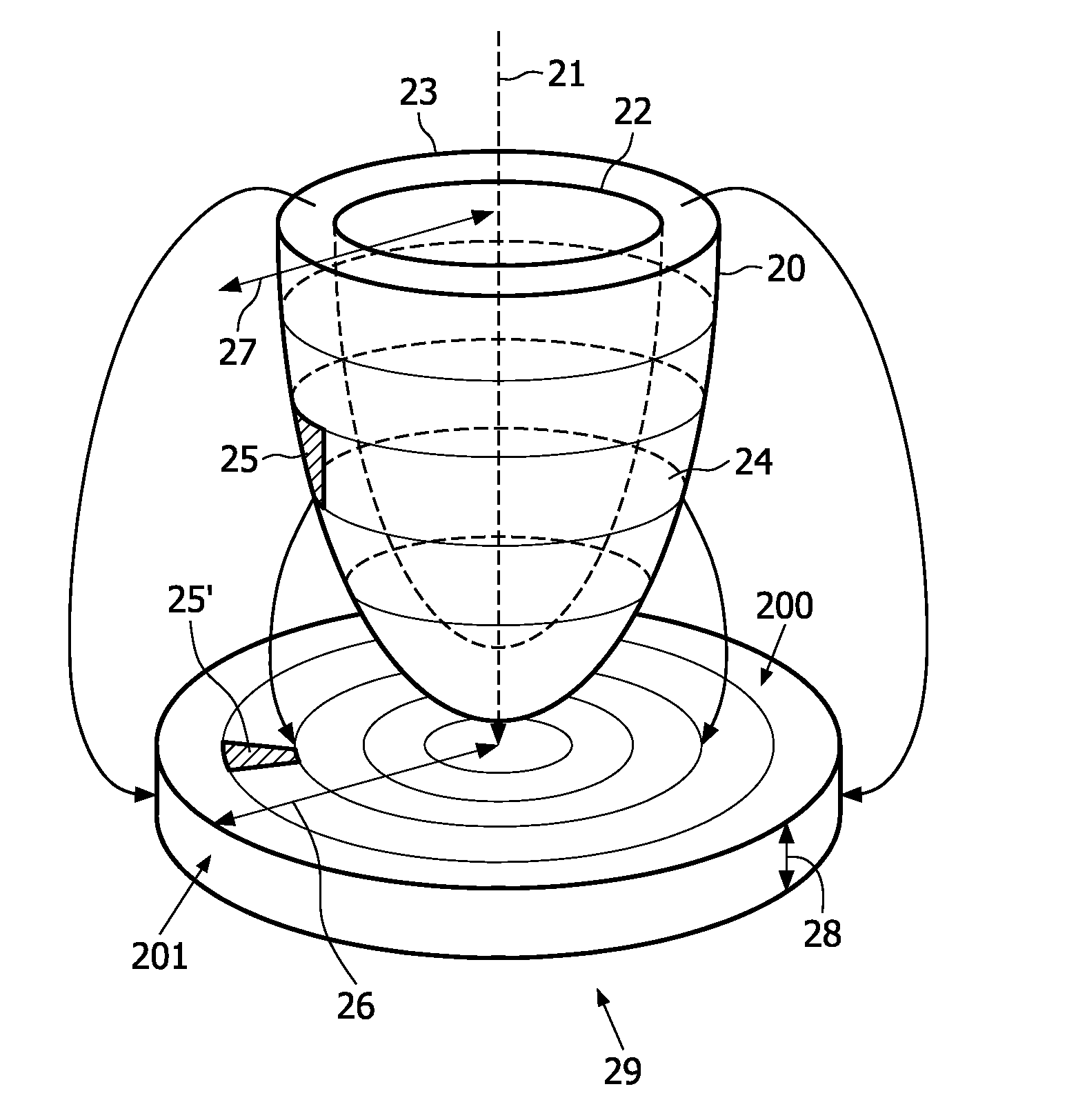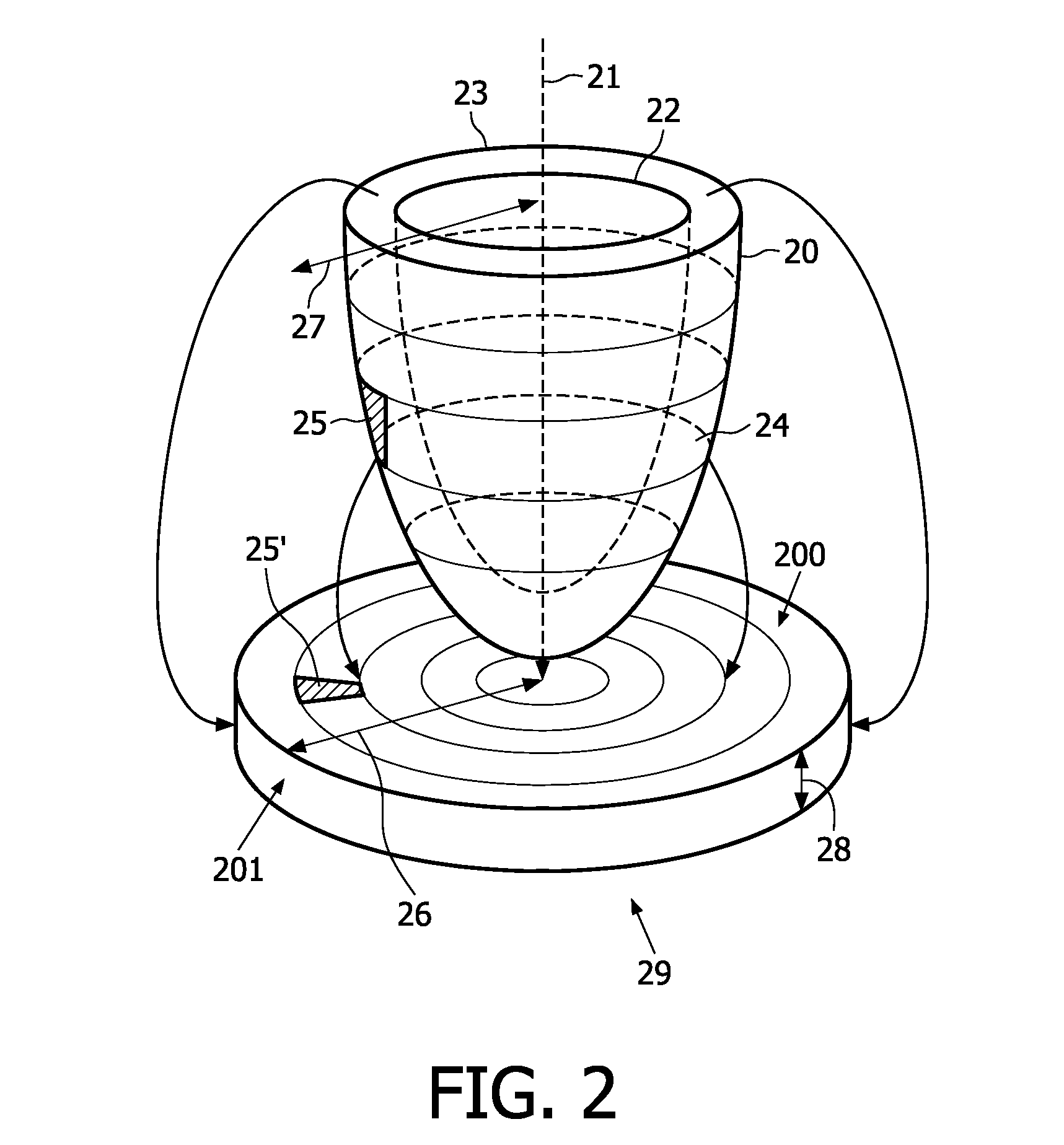Visualization of voxel data
a voxel data and visualization technology, applied in the field of medical images, can solve the problems of difficult for clinical users to efficiently extract information from data, inefficient analysis, and insufficient visualization of tissue within solid organs, and achieve the effect of improving correlation to anatomy and being easy to compar
- Summary
- Abstract
- Description
- Claims
- Application Information
AI Technical Summary
Benefits of technology
Problems solved by technology
Method used
Image
Examples
embodiment
Implementation of the Volumetric Bull's Eye Plot
[0075]The VBEP may be seen as an unfolding of the left ventricle along the long axis followed by a reformatting into a cylinder. The unfolding is based on a parametrization of both the cylinder and the left ventricular myocardium. The parameterization of the cylinder is illustrated in FIG. 10. The long 100 and the short 101 axes of the reference shape may be extracted from a geometric heart model, which may be used to represent the voxel data of the whole heart scan. However, these axes may also be extracted by other means. For example, the axes can be extracted from the orientation information of the late enhancement scan. The endocardium and the epicardium are segmented as a pair of contours on each slice of the late enhancement scan. Each contour is represented by a uniformly sampled piecewise cubic Bèzier spline. In this context, uniformly sampled is to be understood as that the length of any segment of a spline s between s(t) and ...
PUM
 Login to View More
Login to View More Abstract
Description
Claims
Application Information
 Login to View More
Login to View More - R&D
- Intellectual Property
- Life Sciences
- Materials
- Tech Scout
- Unparalleled Data Quality
- Higher Quality Content
- 60% Fewer Hallucinations
Browse by: Latest US Patents, China's latest patents, Technical Efficacy Thesaurus, Application Domain, Technology Topic, Popular Technical Reports.
© 2025 PatSnap. All rights reserved.Legal|Privacy policy|Modern Slavery Act Transparency Statement|Sitemap|About US| Contact US: help@patsnap.com



